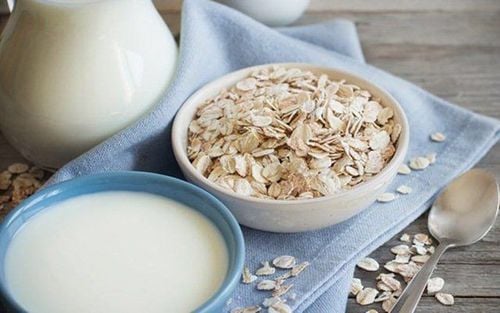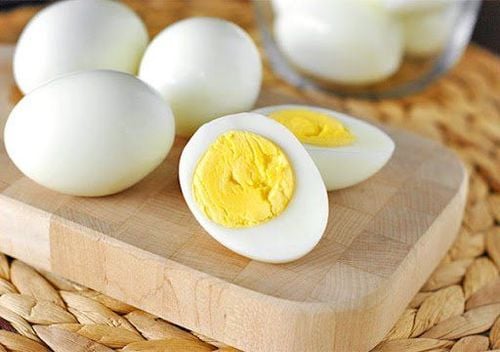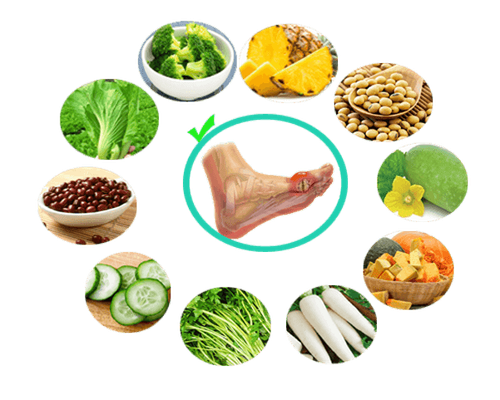A healthy, balanced diet supplies the body with essential nutrients. Here are several ways to create a nutritious diet for your well-being.
1. What is a healthy diet?
A healthy and balanced diet is essential for good health. It protects us from chronic non-communicable diseases such as heart disease, diabetes, and cancer. Eating a variety of foods and consuming less salt, sugar, and fat are key components of a healthy diet.
To get proper nutrition from your diet, the body should be provided with daily calories from foods like: Fresh fruits; clean vegetables; grains; legumes; nuts; and lean protein.
On average, a person needs to consume about 2,000 calories per day to maintain weight. However, an individual's daily calorie intake may vary depending on age, gender, and physical activity levels. Men typically require more calories than women, and people who exercise need more calories than those who are sedentary.
To have a healthy, balanced diet, people should try to: eat at least 5 portions of a variety of fruits and vegetables every day. Have a basic meal of high-fiber starchy foods such as potatoes, bread, rice, or pasta.

2. WHO recommendations for following a healthy diet
2.1 Breastfeeding:
A healthy diet should start early, beginning with breastfeeding. Breastfeeding promotes healthy growth in children and has long-term health benefits such as reducing the risk of overweight or obesity and preventing the development of non-communicable diseases later in life. Exclusive breastfeeding from birth to 6 months is essential for a healthy diet, and after 6 months, a variety of safe and nutritious complementary foods should be introduced while continuing breastfeeding until at least 2 years old
2.2 Eat plenty of vegetables and fruits:
Fruits and vegetables are key sources of vitamins, minerals, fiber, plant protein, and antioxidants. People who eat a diet rich in fruits and vegetables have a lower risk of obesity, heart disease, stroke, diabetes, and some cancers.
2.3 Eat less fat:
Fats and oils are concentrated sources of energy. Eating too much, especially harmful fats such as saturated fats and industrially produced trans fats can increase the risk of heart disease and stroke. Using unsaturated vegetable oils (olive, soybean, sunflower, or corn oil) instead of animal fats or oils high in saturated fats (butter, lard, coconut oil, and palm oil) will help consume healthier fats. To avoid unhealthy weight gain, total fat intake should not exceed 30% of an individual's overall energy intake.
2.4 Limit sugar intake:
For a healthy diet, sugar should account for less than 10% of your total energy intake. Reducing it further to below 5% provides additional health benefits. Choose fresh fruits instead of sugary snacks like cookies, cakes, and chocolate to reduce sugar consumption. Limiting soft drinks, soda, and other sugary beverages also helps reduce sugar intake.

2.5 Reduce salt intake:
Keep your salt intake below 5g per day to prevent high blood pressure and reduce the risk of heart disease and stroke in adults. Limit the use of high-sodium condiments (soy sauce and fish sauce) when cooking and preparing food to reduce salt consumption.
3. Tips for us to gradually build a healthy diet
Eat 100% whole grain bread or whole wheat: Switching to whole grains instead of refined cereals can extend lifespan, control weight, and reduce the risk of type 2 diabetes, heart disease, stroke, and cancer.
Use mustard on sandwiches instead of mayo: Mayonnaise is a high-calorie spread, whereas mustard contains fewer calories and fat.
Drink fat-free milk with oatmeal instead of water: This combination increases protein and calcium in your breakfast. Using 2/3 cup of fat-free milk instead of water adds 6 grams of quality protein, 255 mg of potassium, and 205 mg of calcium, and provides 14% of the recommended daily intake for vitamins B12 and D.

Add flax seeds to yogurt and smoothies: Adding 2 tablespoons of flax seeds to yogurt adds 4 grams of fiber, 2.4 grams of omega-3 fatty acids, and some healthy phytoestrogens (lignans).
Use spinach leaves instead of lettuce in salads: A cup of 4 raw spinach leaves has 20 milligrams of omega-3s, 9,800 IU of vitamin A, 5,890 micrograms (mcg) of beta-carotene, 260 mg of potassium, 26 mg of vitamin C, 150 mcg of folic acid, 2 mg of vitamin E, and 68 mg of calcium more than the same serving of lettuce
Drink unsweetened tea instead of sweetened tea or soda: One serving of bottled or canned sweet tea or soda has about 140 calories and 32 grams of sugar per 12-ounce serving. Switching from sweetened tea or soda to unsweetened tea can save 7,840 calories and 448 teaspoons of sugar per month if you drink about 2 servings of sweetened tea or soda daily.
Order your sandwich or appetizer with fresh fruit or vegetables instead of fries: Fries or potato chips often accompany many of our favorite restaurant dishes. But most of the time you can substitute a side of fresh fruit or vegetables for fries; you just have to ask for it. Each time you order a side of fruit or vegetables instead of fries, you'll shave about 350 calories and 18 grams of fat (5 or more of which are saturated). You'll also add 3 grams of fiber and a type of antioxidant.
Drink coffee with fat-free milk:
Many people treat themselves to a daily frothy coffee in the fall and winter, and as the days get warmer, they trade in their lattes for an iced or brewed coffee. Drinking coffee with fat-free milk allows you to retain the nutritional benefits of milk (quality protein, calcium, and vitamin B-12) while cutting down on calories and fat.

Switch from sugary breakfast cereals to whole-grain, low-sugar varieties: If you eat cereal 5 times a week, choose a cereal like Post Grape-Nuts Flakes (3.4 grams of fiber and 19% of calories from sugar) or Quaker Oatmeal Squares (5 grams of fiber and 19% of calories from sugar) instead of a sugary cereal like Froot Loops, which will give you an extra 17 grams of fiber while cutting out more than 6 teaspoons of sugar per week.
References: who.int; healthline.com
To arrange an appointment, please call HOTLINE or make your reservation directly HERE. You may also download the MyVinmec app to schedule appointments faster and manage your reservations more conveniently.








